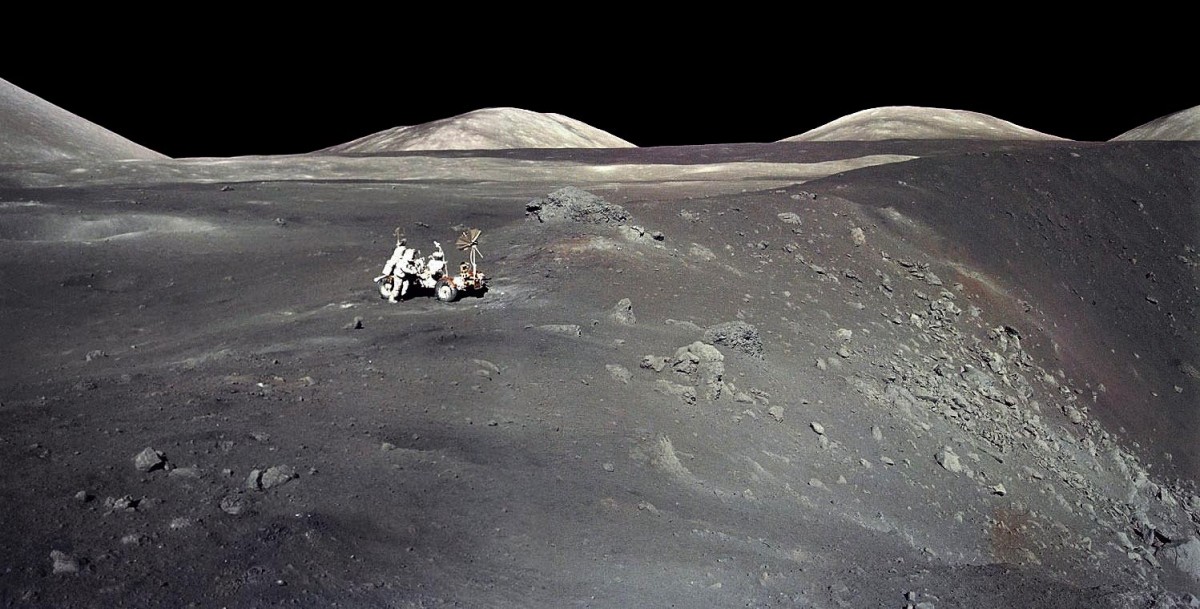NASA now has new options for sampling Moon’s ancient interior
 Apollo 17 crew at Shorty Crater on the Moon with the orange soil in the background.
Image courtesy Apollo 17 Crew, NASA.
Apollo 17 crew at Shorty Crater on the Moon with the orange soil in the background.
Image courtesy Apollo 17 Crew, NASA.Finding and sampling the Moon’s ancient interior mantle — one of the science drivers for sending robotic spacecraft and future NASA astronauts to the Moon’s South Pole Aitken basin — is just as likely achievable at similar deep impact basins scattered around the lunar surface. At least that’s the view reached by planetary scientists who have been analyzing the most recent data from NASA’s Gravity Recovery And Interior Laboratory (GRAIL) and its Lunar Reconnaissance Orbiter (LRO) missions as well as from Japan’s SELENE (Kaguya) lunar orbiter.
The consensus is that the lunar crust is actually thinner than previously thought. If so, this would have made it easier for large impactors of the sort that carved out the near side’s Crisium impact basin, the far side’s Moscoviense impact basin and the Aitken basin to also have excavated some of the Moon’s geologically-compelling early mantle.
Sampling a range of mantle compositions would allow us to test models for crystallization and composition of the Moon’s original molten magma ocean, [said] Jeff Taylor, a planetary scientist at the Hawai‘i Institute of Geophysics and Planteology (HIGP). But he says the real problem is that pure mantle rock might not be present. “Besides being melted it might be mixed with crustal material, giving us a mixed composition. That is not uninteresting, but makes the job of deciphering lunar mantle dynamics and composition difficult.”
Read more about it in Forbes.



